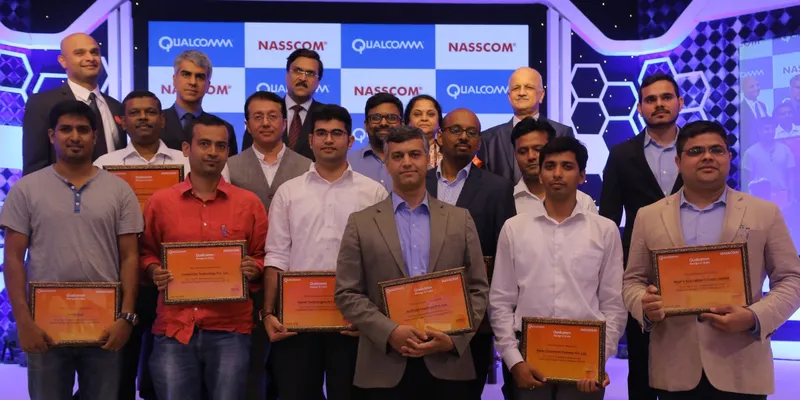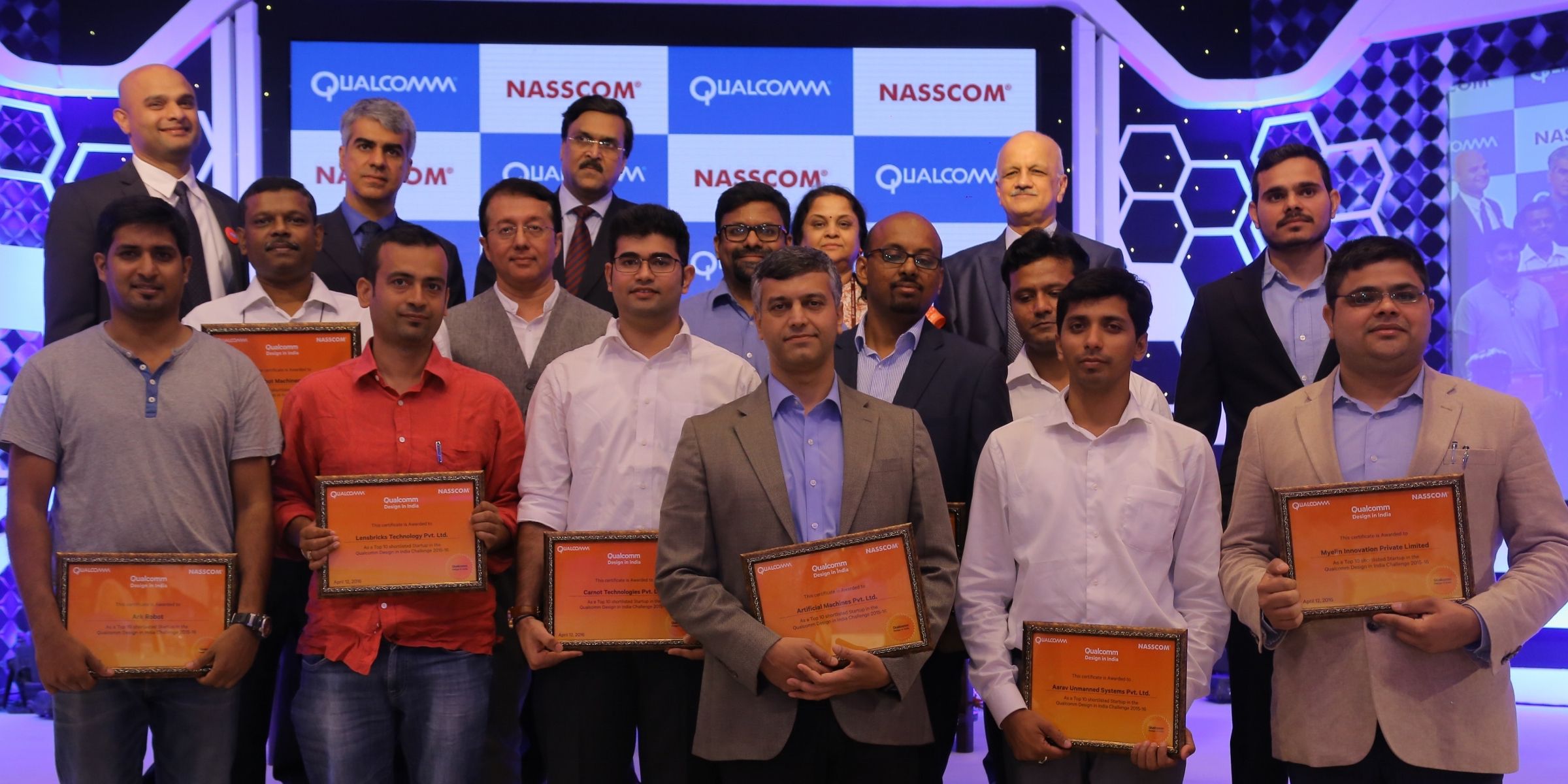#QDIC throws up 10 big ideas that could revolutionise the industry - 2
This article is sponsored by Qualcomm.
The top 10 companies shortlisted as part of the Qualcomm® Design in India Challenge 2015-16 show immense potential to influence the way things are done. Here’s a quick introduction to the other five of the top 10. (Click here to read about the five we featured in part 1 of this story)

Kiba – An interactive self‐editing video camera
Pranav Mishra, CTO & Co-Founder of Lensbricks, introduces Kiba as the world’s first interactive self‐editing video camera. Winner of two CES 2016 Innovation Awards, Kiba allows users to enjoy their best moments with friends and family without having to sift through what they have. Using intelligent, patented ‘joy ranking’ technology to capture and curate footage, it provides users with beautifully edited, easily shareable video clips.
What makes Kiba even more interesting is that it responds to voice commands, has an elegant, simple design, and is accessible via iOS, Android, and the Web. Pranav says, “All you have to do is say the commands like ‘Kiba record,’ ‘Kiba remember,’ or ‘Kiba selfie’ aloud.” Users can also see their top moments in the Kiba app (for iOS, Android, and web), and even share the clips with friends and family. Talking about how Kiba differentiates itself from others in the market, Pranav Mishra, CTO and Co-founder, says, “Today, most cameras with video analytics capabilities focus largely on the security aspects. But our focus is on hard-core videography, thereby making a video that not only captures, but also showcases the user’s cherished moments most beautifully.”
It’s interesting to see why Kiba comes with cool features that wow customers – Kiba’s team and its advisors together have more than 100 patents in imaging. The team also has a successful track record of bringing exciting innovations to the market.
Myelin’s advanced hybrid blimp
Developed by the 10-member team at Myelin, this ‘advanced blimp’ is a combination of an Octocopter and a blimp. It comprises a lightweight envelope filled with helium and equipped with a dynamic buoyancy control system to provide variable upward thrust. The octocopter has the capability to move in space with 6º of freedom.
This hybrid blimp will house various sensing and communication capabilities, which along with the capability of long flights, makes it a very powerful product for both civil and defence use. In its basic form, it comprises a GPS module to provide real-time location and geo-fencing capability, an inertial measurement unit (IMU) to provide real-time 3D orientation, a barometer for real-time altitude of the hybrid octocopter and an RF transmitter and receiver to control the vehicle manually, if needed.
Talking about how their product solves a key problem, Vikash Mishra, CTO, says, “The biggest pain point with propeller drones in the market is flight time. Most can’t fly beyond 30 minutes. Our product can provide extended flight time ranging from 12 hours to a few days. Additionally, the specially designed blimp comes with surveillance capabilities, which is extremely useful in civil and defence purposes.” As an example of the product’s potential use in disaster management, Vikash adds, “Our product can carry and drop up to 20 kg of materials, such as food packets, and reach out to far-flung areas, which cannot be typically reached by a helicopter.”
A high performance computing ARM cluster from Treepie Computing
The team at Treepie Computing shared a brilliant idea – a product that contains a low-cost, high-performance cluster of a development board using Qualcomm® technologies to perform HPC with high MHz/W ratio. This is a completely scalable cluster with automated scripts to incorporate additional computing elements without troubling the user. As Amit R Bhatt, Founder, aptly summarises, “The product helps in the democratisation of high-performance computing.”
Amit adds, “The cluster will be useful for developers of IoT-based applications, video game developers, academicians and students who want to build their own distributed parallel computing applications at a very low cost.” Explaining his stand on ARMs, he says, “Today, ARMs are becoming increasingly powerful and can be used in data/computing intensive tasks. And by capitalising on the strength of the ARM cluster, we hope to bring high computing power at not only a low cost, but also in a low-power envelope.”
Uncanny Vision’s intelligent surveillance camera
With a strong understanding of embedded design, computer vision, and machine learning, the team at Uncanny has come up with an intelligent surveillance camera. It comprises a few key technologies like deep learning-based CNN/RNN models for scene recognition, anomaly detection, face recognition and human pose detection; an UncannyCV and UncannyDL for optimised vision (Uncanny CV and Uncanny DL for home-grown products, which accelerates computer vision for IoT devices); and a network backend connected to Amazon Web Services IoT platform for real-time alerts.
Talking about the usability of the product, Ranjith Parakal, Founder, says, “The product provides real-time alerts, thereby enabling quick action in times of crisis, and even potentially reducing the intensity of the consequence.” He adds, “What makes our product stand out is that we are using artificial intelligence technology in the surveillance camera, thereby providing a host of benefits.”
A compact HD IP camera from Watchy Technologies
Watchy SafeCam aims to provide reliable IP connectivity to surveillance cameras by intelligently aggregating 2G/3G/4G links. The full HD IP Camera comes equipped with features like audio, MP5 compression, uninterrupted direct streaming to the cloud. The camera can also be streamed over Watchy's speedlink technology over multiple 2G, 3G, 4G and Wi-Fi networks.
A key advantage of Watchy SafeCam is that it provides intelligent cloud features including six-second clip alerts sent to smartphones, and has advanced intelligence capabilities such as people counting, animal detection, and vehicle tracking. Explaining the applicability of the Watchy SafeCam, Sriramkumar V H, CEO and Founder, says, “Let’s take the example of the surveillance cameras installed in malls. At the moment, the video captured by these cameras serve nothing but as a proof or validation when a crime occurs. We want to take this to the next level by enabling these cameras to communicate with each other and make them intelligent so that they can be used for a variety of purposes.”
The 10 shortlisted companies will now be incubated in the Qualcomm® Innovation Lab working with Qualcomm’s engineers for engineering and technical support. We’re excited to see what each of these companies will have to showcase in six months time!











